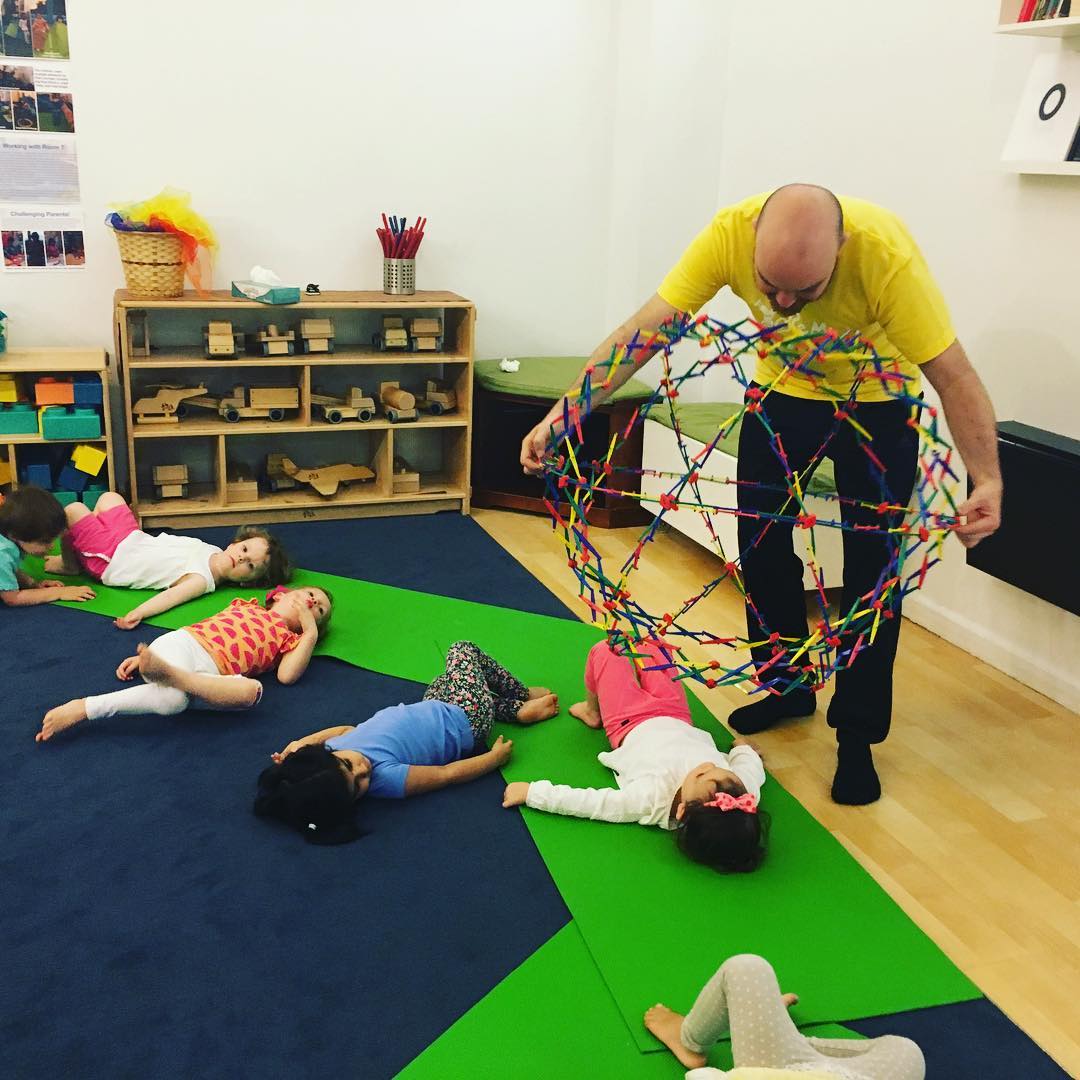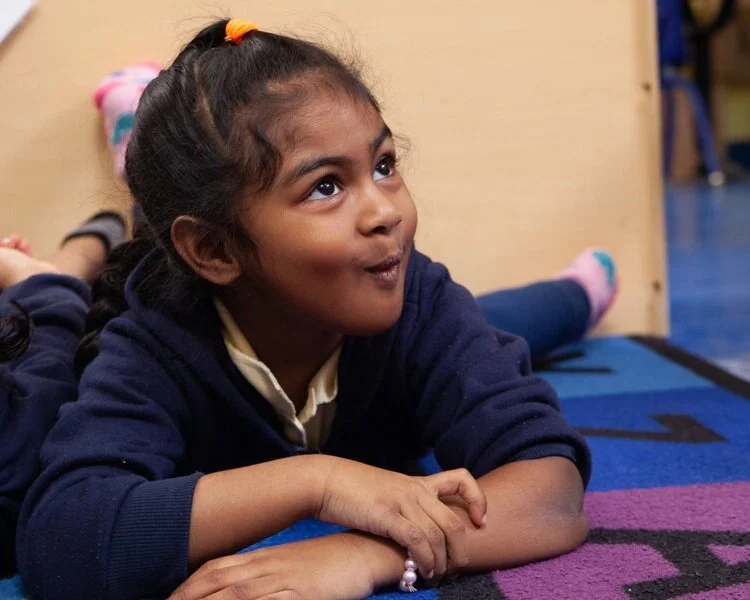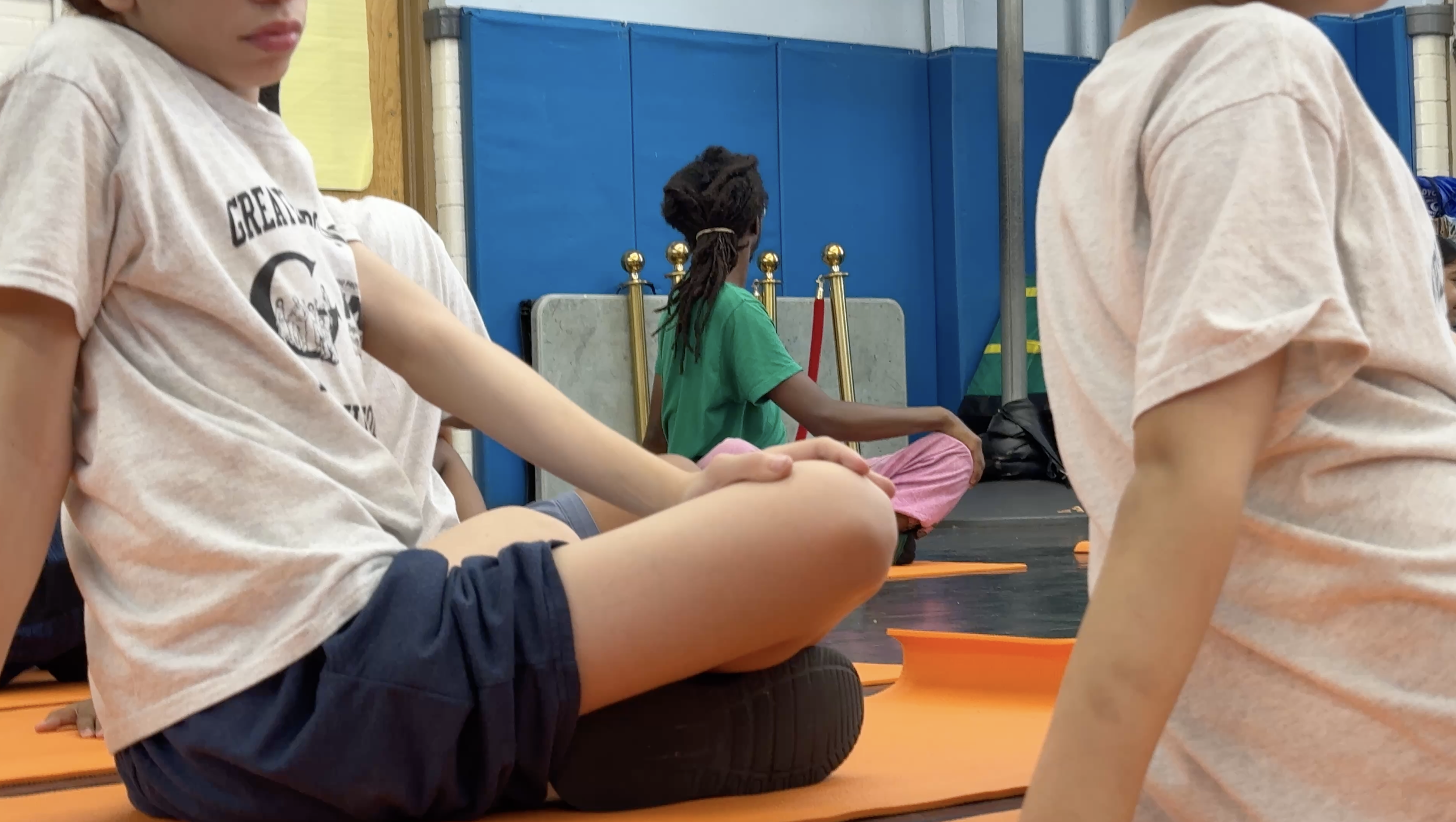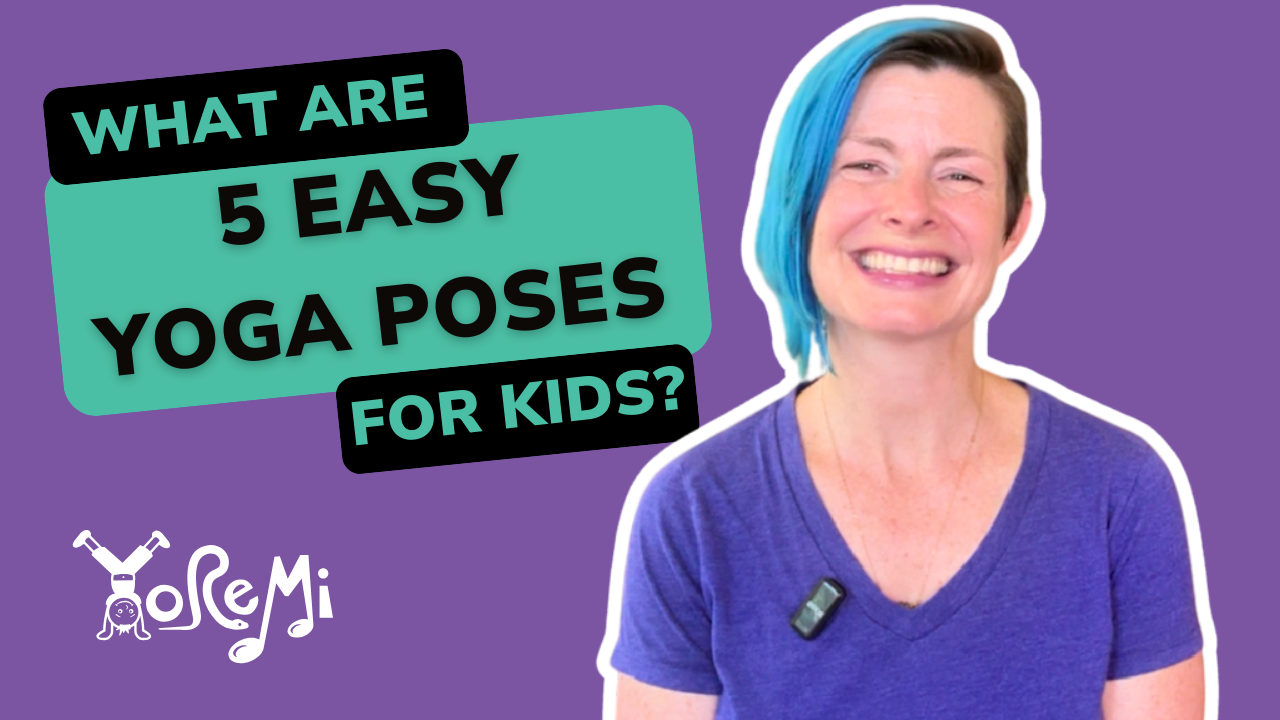Yoga Sensory Activities for Autism (Using the Three M's!)
Diagnoses of autism are on the rise: now 1 in 68 children have autism, according to the Center for Disease Control (CDC). Families, educators and other professionals are searching for new effective ways to support children facing the challenges of Autism Spectrum Disorder (ASD) which may include difficulty with communication, social-emotional skills, and anxiety.
“Autism is a way of being. It is pervasive; it colors every experience, every sensation, perception, thought, emotion and encounter, every aspect of existence.”
Every day we are learning more about the positive effects of yoga for stress reduction and overall physical, emotional and mental health. Recent studies have shown that children with autism, specifically, respond very positively to regular yoga practice.
The Benefits of Yoga for Children with Autism
Some of the encouraging physical benefits of yoga include increased strength, flexibility, balance and coordination. But there are more subtle gains as well: increased social-emotional skills, body awareness, self-regulation, focus and concentration are benefits as well!
A study published in the American Journal of Occupational therapy found that children with autism who practiced yoga consistently over only a 16-week period showed significant improvement of challenging behaviors (Koenig, Buckley-Reen & Garg, 2012).
A separate study published in the International Journal of Yoga Therapy showed an improvement in imitation skills as well as increased eye contact, sitting tolerance, non-verbal communication and receptive communication skills (Radhakrishna, S., 2010).
Mindful Sensory Integration for Kids with the Three M’s
Yoga is often described as a way of being. Yoga literally means union, and the practice works on every level of a person, providing benefits along one’s bio-psycho-social-emotional landscape.
Want to easily integrate yoga practice into a child’s home, school or program setting to reduce stress and anxiety, while increasing overall wellbeing? Just follow the three M’s: Movement, music, and mindful fun.
- Movement Matters -
Many children with ASD may have difficulty with sensory integration: body awareness, spatial awareness and motor control. The poses practiced in yoga support development of fine and gross motor skills while strengthening and stretching the whole body.
Children are asked to observe their physical body - tapping or moving in specific ways to become more aware of how they feel and where they are in space (Body Scans are great for this). As children learn and practice yoga poses, they also increase their capacity for motor planning — a skill that allows us to remember and perform steps to make a movement happen.
It is the ability to conceive, plan, and carry out a skilled action in the correct sequence while integrating incoming sensory stimuli to form the basis for appropriate, coordinated responses. Phew!
FOR EXAMPLE: Brushing your teeth in the morning. It’s probably pretty routine by now…You don’t even need to think about it, right? Take a moment to consider all the important small motor steps involved:
opening the bathroom cabinet with appropriate force so the mirror doesn’t crash
aiming and then squeezing toothpaste onto a relatively small brush area with just the right amount of pressure so toothpaste doesn’t squirt everywhere
brushing the teeth in a circular motion
rinsing and then putting everything away
Without a lot of motor planning, this simple task becomes impossible.
1. Yoga Sensory Activity for Autism: BABY COBRA POSE
Cobra is a wonderful beginner yoga pose that brings us into our body and combats anxiety. Feeling the pressure of the belly against the floor is both grounding and calming. Then, focusing awareness on the back of the body by incorporating a gentle back-bend allows us to strengthen muscles we might not ever think about.
Most children, in general, have very little connection to the back of the body and may startle easily when someone comes up behind them. This pose increases awareness while also providing a great opportunity to practice deep, slow breathing to promote relaxation and calm.
How to do Baby Cobra Pose:
Lie on your belly, bend elbows and place hand underneath your shoulders.
Breathe in and lift your head, shoulders and chest away from the floor.
Try to put very little weight into the hands and use back muscles to lift instead.
Breathe out slowly on a hissss as you lower back down to the ground.
Repeat 5 times, moving slowly and lengthening the inhale and exhale as long as you can with comfort and ease.
Once you have played with baby cobra, you can try putting weight into the hands to lift the chest higher and sing along with Slithery Snake!
Yoga poses and sequences are a fun, stress and mess-free way to practice these motor skills. Children learn best when learning is interesting, engaging and enjoyable; starting with animal yoga poses can be a great way to introduce yoga to kids.
2. Yoga Sensory Activity for Autism: TREE POSE
Yoga poses are typically taught two ways - either through verbal instruction, or verbal instruction combined with live demonstration. Kids yoga is most often taught with the second method, which makes this practice especially powerful for developing a child’s imitation ability and verbal cognition, both foundational for social and communication skills.
Teachers may also use visual cue cards to enhance the lesson and give further information to a student to keep them engaged and on task. Using pose names and pairing simple, repetitive language with movement to guide children through the sequences also supports development of language and vocabulary.
How to do Tree Pose:
Stand tall in mountain pose and then move into tree pose using this catchy rhyme.
Feet on the ground where our roots go down
Arms up high like branches in the sky
Balancing tree, put your foot below your knee
And FREEZE for 1... 2... 3
Give yourself a little clap, clap, clap, clap, clap!Offer children the option to keep the lifted foot toes on the ground for extra balance, eventually sliding them up below the knee once they feel more steady.
Practice tree pose with backs against the wall for stability and grounding while promoting body awareness.
- Make it Musical -
Music is an especially effective therapeutic tool for children with autism. It can stimulate both hemispheres of the brain at once, supporting cognitive ability and self-awareness while also encouraging communicative behavior and interaction with others.
Several studies have shown that music can help children with language learning, as well as with patterning and sequencing, which may contribute to literacy and math competencies.
Even if you wouldn’t call yourself a “singer,” you probably sing…maybe power ballads in the shower or your favorite radio hit driving down the highway with the volume so high no one could hear you if they tried. Humans make music naturally, and some scientists believe that singing even predated spoken language.
Kids are no different.
Tell a child to clean up their room and you may or may not receive any response at all. But sing the clean-up song while modeling the expected behavior and you have just turned a boring task into a fun and engaging game.
Music has the power to capture attention, create mood, stimulate emotions and even resurface age-old memories. Yo Re Mi classes utilize a pedagogy called Dalcroze Eurythmics where students embrace the body as a physical instrument of music. They experience rhythm, beat patterns, time signature, tempi, tonal changes, and other musical concepts through movement. Additionally the students can improvise movement which is informed by their personal experience of the music they are hearing.
“Cherish the children marching to the beat of their own music. They play the most beautiful heart songs.”
3. Yoga Sensory Activity for Autism: Deep Breath In
Using musical cues at home or in the classroom can help children develop certain sequences of actions or behavior patterns and can be a fun and engaging way to encourage the development of executive function, motor planning and communication skills.
You can even use music to promote emotional regulation and relaxation through deep breathing exercises for children.
Deep breath guide for body warm up:
Start sitting comfortably, cross-legged if that feels okay
Lengthen the spine and bring shoulders over the hips and ears over the shoulders
Bring hands to knees and then cross hands to opposite knees. Take this slow at first to give children the chance to figure this out. Depending on the setting and your level of expertise, you may offer a hands-on assist to help children with this movement and then have them try a few times on their own.
Then rub palms of hands together…faster and faster. What do you notice? Are they getting warmer?
Take a deep breath in through the nose, lengthening arms and pressing palms together overhead.
Widen arms out and down as you exhale with a long “O” sound.
Switch rubbing hands in the sequence with clapping and then tapping the body as you sing along.
- Mindful Fun -
Through both movement and music, children begin to increase self-awareness. As we start to observe how our body feels and interact with sounds and other sensory input, we begin to practice mindfulness.
Mindfulness is simply observing without judgement. It’s our ability to become fully present with whatever is without attachment. Taking moments to notice our thoughts, emotions, and physical sensations increases our capacity to create space between stimulation and response, or action and reaction. This skill is the foundation for self-regulation.
Yoga and music provide opportunities for children to practice mindfulness in a non-competitive, supportive and nurturing environment. Because yoga is more focused on the process rather than the result, children get to be successful right away, simply by engaging in the activity, no matter their level of physical, social or emotional ability. Yoga meets everyone exactly where they are.
“There needs to be a lot more emphasis on what a child can do instead of what he cannot do.”
By practicing yoga and breathing exercises in calm, fun and peaceful moments, children will be able to access those tools for self-regulation in moments of stress. They may even remind their adults to take deep breaths when things are getting out of hand.
4. Yoga Sensory Activity for Autism: If I Could Be Any Animal In The Jungle
For children with ASD, who are often constantly monitored and managed, yoga can provide a safe and encouraging environment for autonomy and agency.
The practice provides constant reminders to tune into oneself and move and breathe in ways that will create feelings of wholeness and well-being. Children have the opportunity to develop a sense of their needs and how they can meet those themselves.
The engaging animal song, “If I Could Be Any Animal in the Jungle” gives children the chance to turn into their favorite animal or think about what animal most matches how they are currently feeling.
In this video, we sing along with Dan to learn the song and then invite children to make up their own verses.
Ask children what animal they would be and then ask them to describe that animal and what they would be doing. Have fun together moving around, making animal pose and noises.
The sleepy part is great because it’s a fun way to teach children that they can easily switch from movement to stillness and from loud to quiet. Children get to explore their range and know that each end of the spectrum is possible and available.
Through the combined practice of yoga, music and mindfulness, children with ASD increase social and communication skills, increase body awareness, reduce anxiety, improve their ability to understand and express emotions and foster a positive sense of self.
Save this post:
Rachel Costello is the Executive Director of Yo Re Mi. She is a professional touring musician and Yoga Alliance registered teacher (ERYT200, RCYT, RPYT, YACEP) specializing in hatha, vinyasa, prenatal, postpartum, and yoga for labor and delivery. Through Yo Re Mi Rachel brings musical yoga enrichment to NYC children. Rachel has taught adults and children since 2005 and believes yoga harnesses our innate energy to increase self-awareness, confidence, health, positivity and balance, while having FUN!















